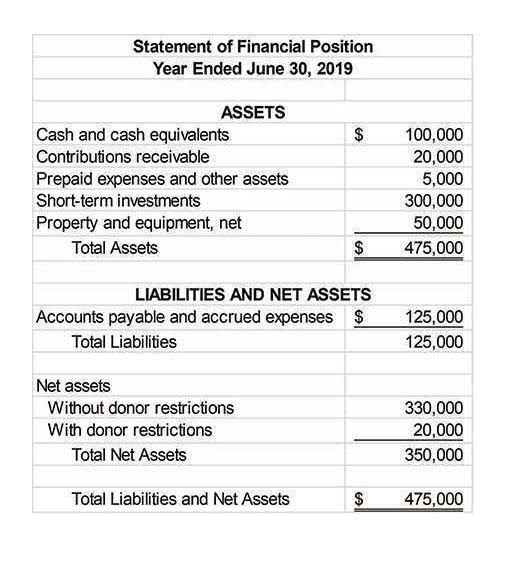
As the coverage period expires, the prepaid insurance account is reduced, and the consumed portion is recorded as an insurance expense in the income statement. When an advance insurance payment is made, the https://www.bookstime.com/ is a debit to the prepaid insurance account and a credit to the cash account. According to the accounting debit and credit rules, a debit entry increases assets, expenses, and dividends accounts while a credit entry decreases them. Prepaid insurance is an asset and going by the debit and credit rules, the prepaid insurance account increases by a debit entry while the cash account decreases by a credit entry.
Adjusting entry for prepaid insurance

The ending balance in the contra asset account Accumulated Depreciation – Equipment at the end of the accounting year will carry forward to the next accounting year. The ending balance in Depreciation Expense – Equipment will be closed at the end of the current accounting period and this account will begin the next accounting year with a balance of $0. The $25,000 balance in Equipment is accurate, so no entry is needed in this account. As an asset account, the debit balance of $25,000 will carry over to the next accounting year. This method is generally what is shown in textbooks as it most closely follows the theory of why we record prepaid expenses. The prepaid expense is recorded when cash is spent and then it is reduced as the item is utilized.
How to Record? Prepaid Expense Examples
A prepaid expense is classified as a type of asset account in the company’s financial records. Specifically, it falls under the category of current assets on the balance sheet. Prepaid expenses may need to be adjusted at the end of the accounting period. The adjusting entry for prepaid expense depends upon the journal entry made when it was initially recorded. Accurately accounting for business transactions, including prepaid expenses, is essential for ensuring accurate financial statements.
- The amount of the insurance premiums that remain prepaid at the end of each accounting period are reported in the current asset account, Prepaid Insurance.
- Equipment is a noncurrent or long-term asset account which reports the cost of the equipment.
- As the prepaid insurance expires throughout the passage of time, the company needs to transfer the prepaid insurance that has expired in the period to the insurance expense.
- What we are actually doing here is making sure that the incurred (used/expired) portion is treated as expense and the unused part is in assets.
- To answer this, let’s discuss the journal entry for prepaid insurance.
- Accumulated Depreciation – Equipment is a contra asset account and its preliminary balance of $7,500 is the amount of depreciation actually entered into the account since the Equipment was acquired.
- When he paid this premium, he debited his insurance expenses account with the full amount, i.e., $4,800.
What Are Prepaid Expenses Journal Entry? Explained With Examples
- On the other hand, you would record a prepaid expense when the payment is made in advance for goods or services that will benefit the company in future periods.
- This journal would be used if your business has paid or will be paying a contractor to repair something.
- Prepaid expenses are a type of asset added to the balance sheet when a business makes advance payments for goods and services in the future.
- These payments are recorded as assets on the balance sheet until they are used or consumed, at which point they become expenses on the income statement.
- Prepaid assets typically fall in the current asset bucket and therefore impact key financial ratios.
This insurance can also be known as professional indemnity insurance and is suited for businesses providing a service. It protects against financial loss resulting from errors or negligence. The insurance provider charges an annual fee, called a premium, prepaid insurance journal entry which will cover the business for 12 months. An insurance expense occurs after a small business signs up with an insurance provider to receive protection cover. A related account is Insurance Expense, which appears on the income statement.
We’re firm believers in the Golden Rule, which is why editorial opinions are ours alone and have not been previously reviewed, approved, or endorsed by included advertisers. The Ascent, a Motley Fool service, does not cover all offers on the market. For example, you move into a new building at the end of December, with your first month’s rent due Jan. 1. Because your new landlord allowed you to move in early, he’s now requesting you pay rent for the entire year, in advance. Over 1.8 million professionals use CFI to learn accounting, financial analysis, modeling and more.
Likewise, the adjusting entry at the end of the period is necessary for the company to recognize the cost that expires through the passage of time. Prepaid insurance is usually charged to expense on a straight-line basis over the term of the related insurance contract. When the asset is charged to expense, the journal entry is to debit the insurance expense account and credit the prepaid insurance account. Thus, the amount charged to expense in an accounting period is only the amount of the prepaid insurance asset ratably assigned to that period. As the goods or services are utilized over time, the prepaid expense asset account is gradually reduced, and the corresponding expense account is increased.
These entries will also affect your financial statements, with your asset account (Prepaid Insurance) steadily reduced while your Insurance Expense amount will increase. Note that in this example we established a short-term and long-term prepaid component because the initial payment was for a two-year subscription. The long-term subscription prepaid represents the value of the subscription paid for in advance beyond 12 months and is amortized at the beginning of the subscription term. The proceeding amortization schedule illustrates the appropriate amortization of the short-term and long-term portions of the prepaid subscription. I have entered their figures into the free bookkeeping software called Manager so you can see the insurance journal entry in action. The above journal is only used when the business pays for the owner’s personal insurance out of the business bank account.
Do you already work with a financial advisor?
